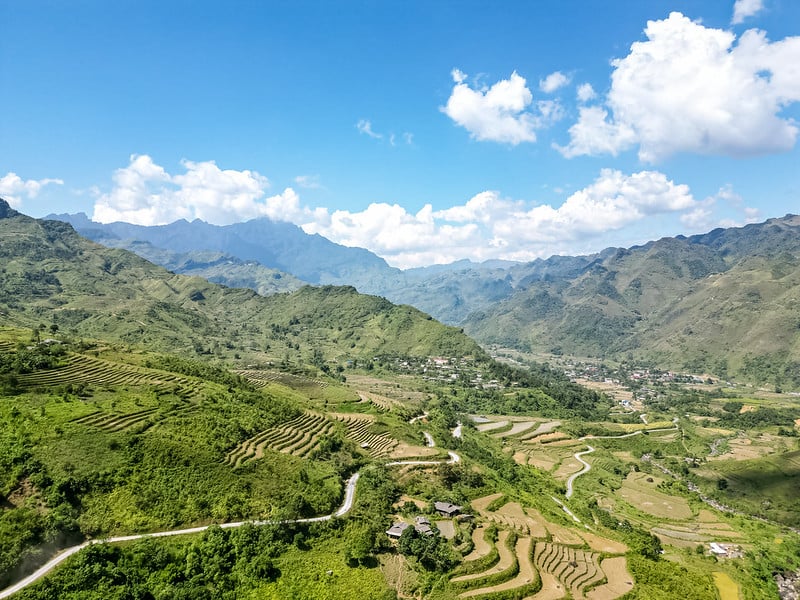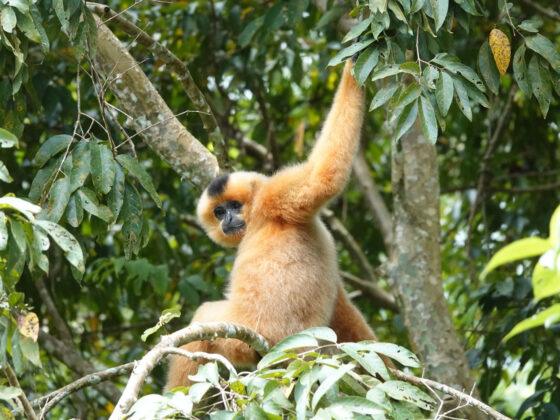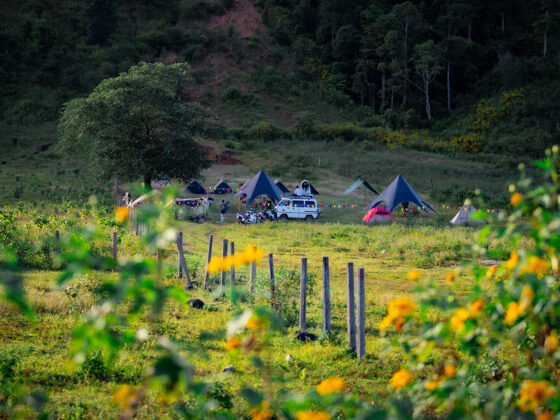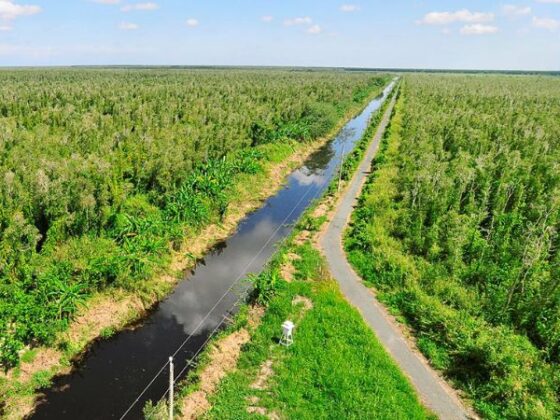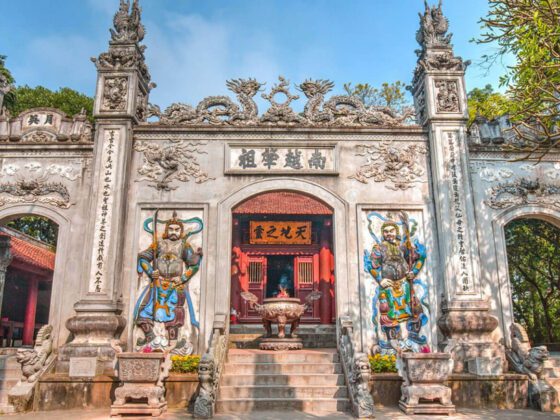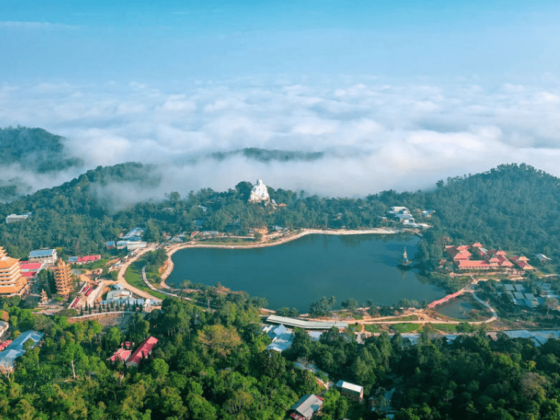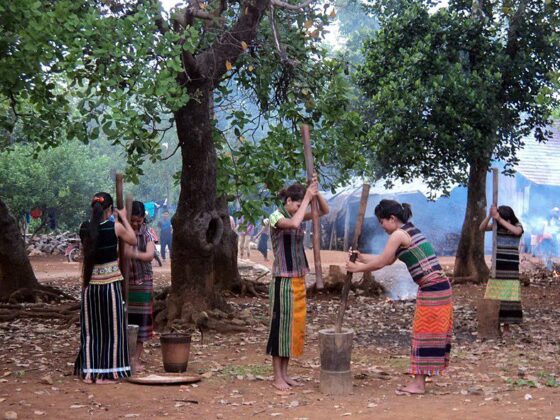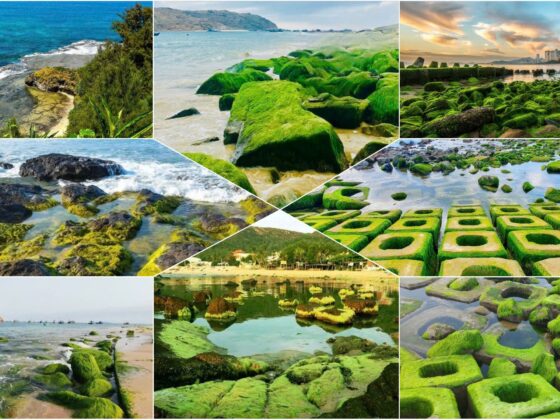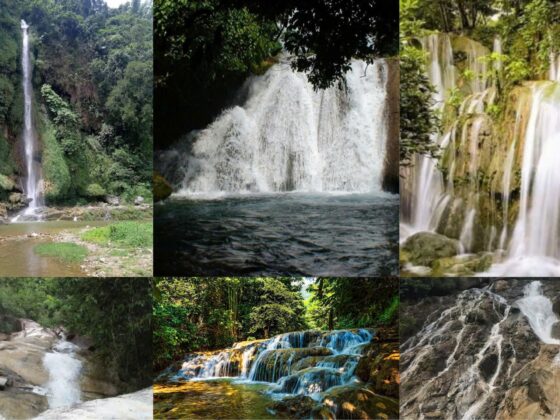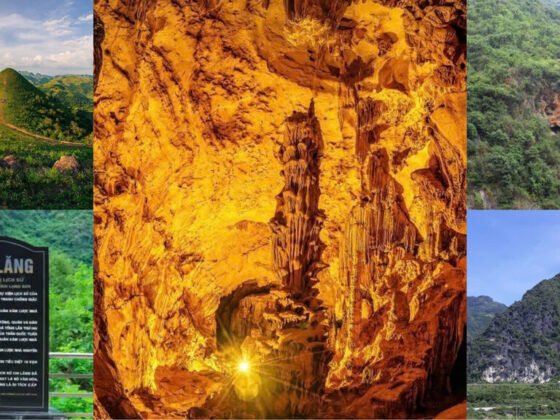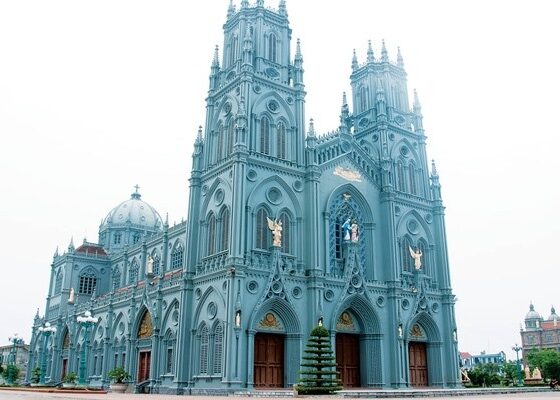Table of Contents Show
There are places in Vietnam where the land itself seems to whisper of history, silence, and endurance. Hà Giang, in the country’s far north, is one such place — a province of rugged limestone peaks, sharp ridgelines, and valleys carved by centuries of wind and rain. Here, Hà Giang frontier trekking, where Vietnam brushes against China, is not just about landscapes. It is about walking on the edge — of nations, of cultures, and of your own limits.
Read more interesting posts here:
- A Hiker’s Guide: The 10 Best National Parks in Vietnam
- You Belong Outside: A Gentle Guide to Hiking for Beginners
- Built for Wanderers: The Story Behind Our App for Everyday Explorers
The challenge of Hà Giang frontier trekking
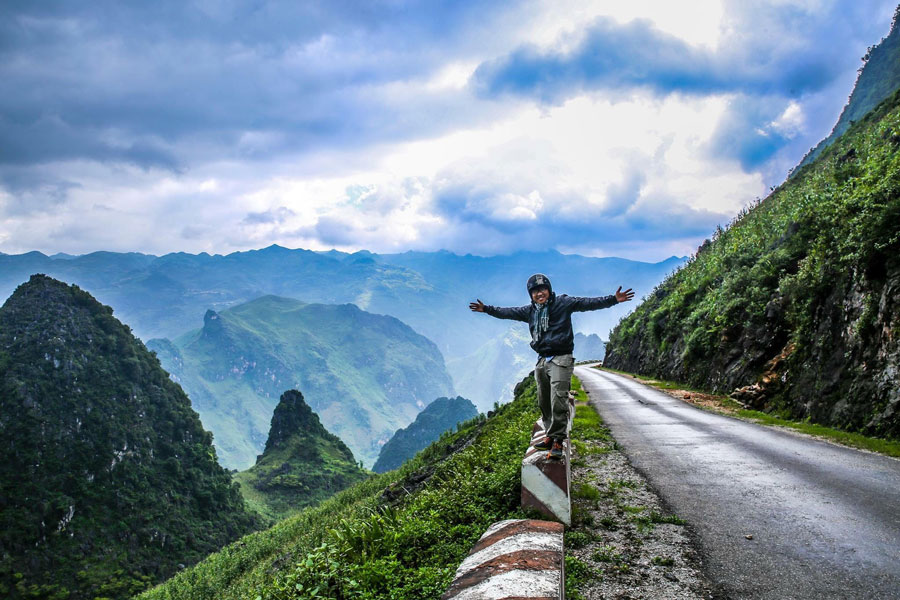
The journey often begins in Đồng Văn, a small town where the old quarter still shows traces of French-era stone houses and markets that fill with color each weekend. From here, the trail leads upward into karst country — black, jagged limestone ridges rising like dragon’s teeth. Paths wind through maize fields that cling impossibly to steep slopes, and stone fences built by H’Mông farmers mark the boundaries of plots carved from unforgiving land. The air is crisp, the wind constant, and the silence deeper than you expect, setting the perfect stage for a Hà Giang frontier trekking adventure.
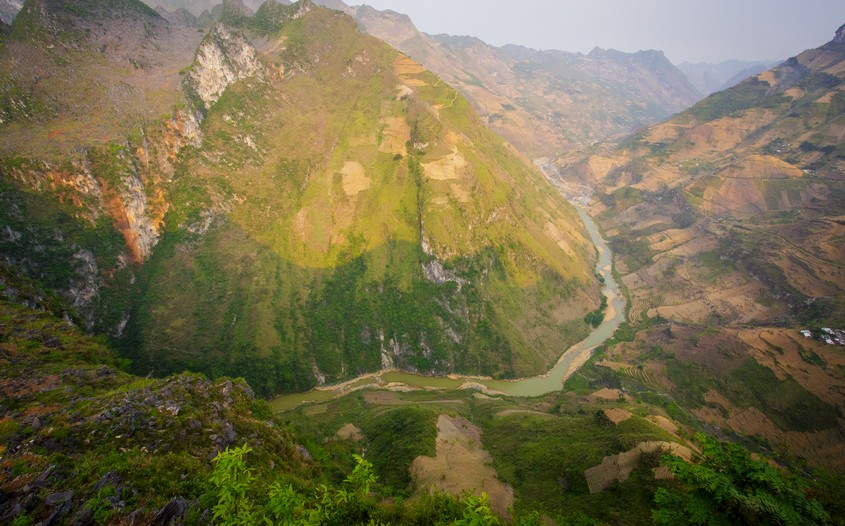
Physically, these treks are demanding. Trails follow ridgelines where the drop on either side is sudden and sheer. You climb switchbacks carved into rock, descend into valleys where streams glint like silver threads, then climb again — always chasing the horizon. The reward, though, is immense. Standing on a ridge, you look out across two countries at once: mist rolling through valleys in Vietnam, terraced fields stretching into China. Borders here are invisible, marked only by markers of stone, yet the sense of standing on an edge is undeniable — a hallmark experience of Hà Giang frontier trekking.
Camping on the edge of the border
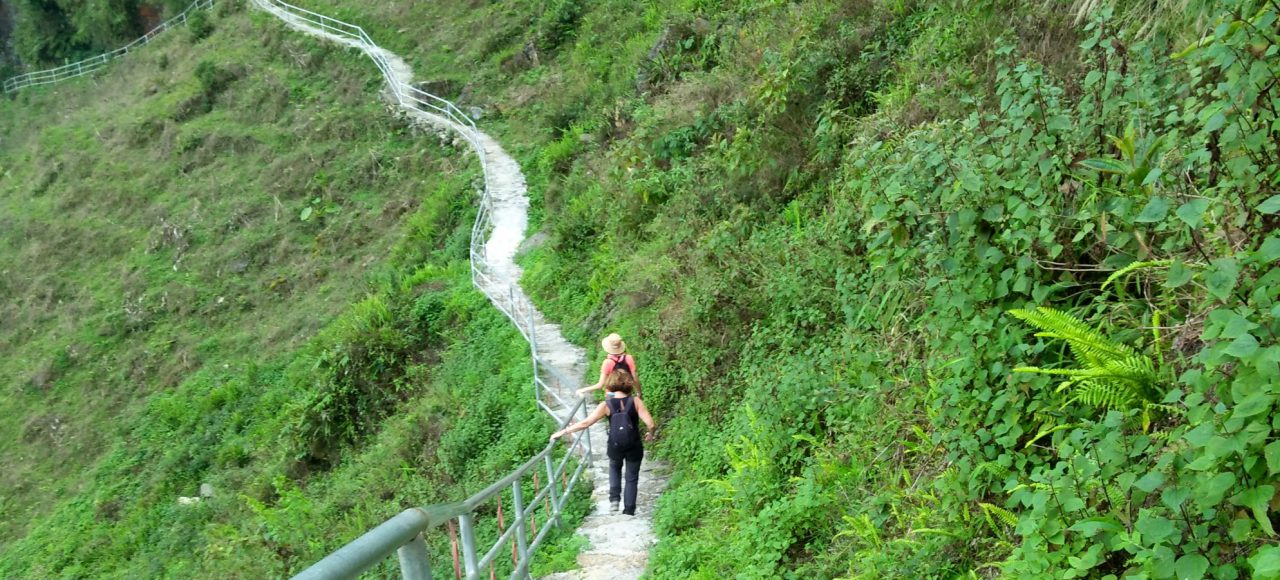
Camping along the ridges brings its own magic. One evening, after hours of climbing, we set our tents on a flat outcrop overlooking the Nho Quế River, its turquoise waters winding like a ribbon far below. As night fell, stars spread across the sky in a brilliance untouched by city lights. The silence was broken only by the occasional bark of a dog from a distant village, or the low hum of wind through the limestone. It felt both remote and profoundly connected — a quintessential moment in Hà Giang frontier trekking, where the land reminds you how small and yet part of something vast you truly are.
Cultural encounters on the frontier trails
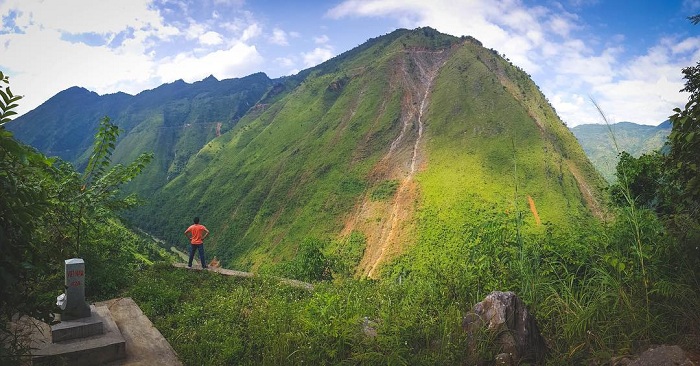
The frontier is not just stone and silence. It is also alive with culture. Along the trails, we met H’Mông families carrying baskets of firewood, women in vibrant embroidered skirts, and children darting like sparrows across the ridges. In small villages, bowls of maize wine were offered with shy smiles, and stories were told of ancestors who defended these highlands. Some guides spoke of wartime watchtowers still hidden in the hills, relics of conflict that once defined these borders. Today, they stand quiet, reminders that this land has always been a meeting place — sometimes of peace, sometimes of struggle — a living tapestry experienced fully during Hà Giang frontier trekking.
Fuelling your trek: The flavors of Hà Giang
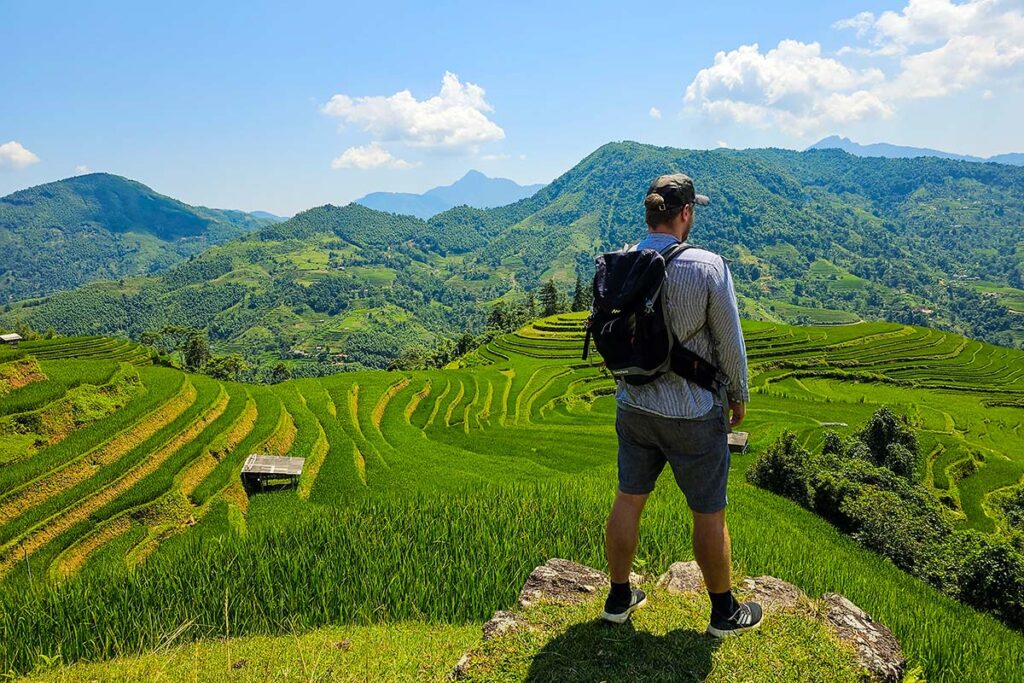
Before or after trekking, Hà Giang also nourishes in another way: its food. To fuel up for the trails, you’ll want to try thắng cố, a traditional H’Mông stew made from horse meat and herbs, rich in flavor and perfect for cold evenings. In Đồng Văn, mornings often begin with a steaming bowl of phở bò tái Hà Giang — simple beef noodle soup, lighter than southern versions but deeply warming. For snacks on the go, locals sell bánh tam giác mạch, a soft buckwheat cake made from the very flowers that blanket these mountains each autumn. And nothing restores energy quite like a sip of ngô wine — corn wine distilled in small villages, strong but shared with generosity. Each dish carries the landscape into your body, fueling both legs and spirit for the journey ahead of Hà Giang frontier trekking.
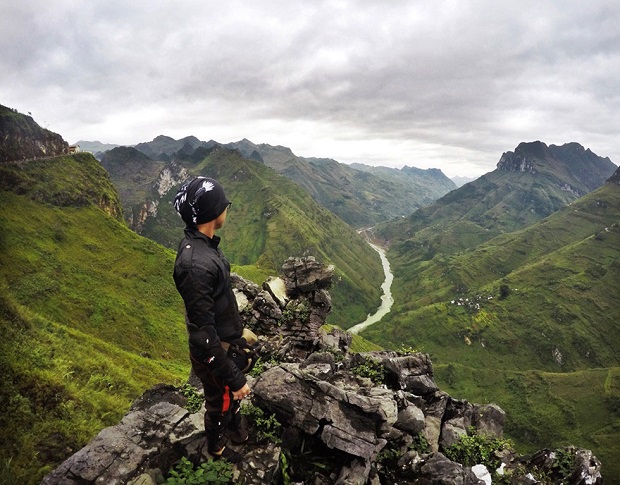
For trekkers, Hà Giang is humbling. The terrain strips away comfort and demands focus. But the land also gives back — in views that seem endless, in the laughter of children chasing your group along a path, in the warmth of a fire shared with strangers, and in the flavors of food that sustain communities who thrive in this rugged place.
Standing on one of those ridges, where Vietnam leans into China, I felt something rare: the quiet weight of history and the fierce presence of the present, all in one breath. The frontier trails of Hà Giang frontier trekking are not about crossing borders. They are about learning that edges are not limits, but invitations — to see further, to feel deeper, to listen to the silence that carries stories older than maps.
When I descended back toward Đồng Văn, the ridges fading behind me, I carried the memory of walking the edge of a country and finding, in that silence, the edge of myself.
Conclusion
In the end, Hà Giang frontier trekking is a humbling experience. The terrain strips away comfort and demands focus. But the land also gives back — in views that seem endless, in the laughter of children on a path, in the warmth of a fire shared with strangers, and in the flavors of food that sustain communities in this rugged place. The frontier trails of Hà Giang are not about crossing borders. They are about learning that edges are not limits, but invitations — to see further, to feel deeper, to listen to the silence that carries stories older than maps.
Ready to discover your own trail tale? Join our community of explorers in the ExoTrails Facebook Group and follow the ExoTrails Fanpage for daily inspiration and trail tips!
FAQs
How challenging are the frontier trails for trekking in Hà Giang?
Trekking in Hà Giang is physically demanding, with trails following rugged limestone ridges, steep slopes, and switchbacks carved into rock. It requires good physical endurance and a willingness to embrace challenging terrain.
What unique cultural experiences can trekkers find in Hà Giang?
Trekkers can encounter H’Mông families in traditional attire, be offered maize wine, and hear stories of ancestors. Visiting local villages provides insights into daily life and the resilient spirit of the ethnic minorities.
What local delicacies should I try in Hà Giang?
Don’t miss thắng cố (traditional H’Mông horse meat stew), bánh tam giác mạch (buckwheat cake), and ngô wine (corn wine) to fuel your adventures and experience the region’s unique culinary traditions.
Is it possible to see the border between Vietnam and China while trekking in Hà Giang?
Yes, while trekking along the ridgelines, you can often look out across both countries simultaneously. The border itself is often marked by subtle stone markers.
What is the best time of year for trekking in Hà Giang?
The dry season, typically from October to April, is generally recommended for trekking in Hà Giang. The buckwheat flower season (October-November) is particularly stunning.
What makes the landscape of Hà Giang unique for trekkers?
Hà Giang’s landscape is dominated by dramatic karst mountains, often described as dragon’s teeth. These rugged, jagged limestone formations create a breathtaking and challenging environment.
Should I hire a local guide for trekking in Hà Giang?
Yes, hiring a local guide is highly recommended. They provide essential safety, navigate the complex trails, and offer invaluable insights into the local H’Mông culture and history.

